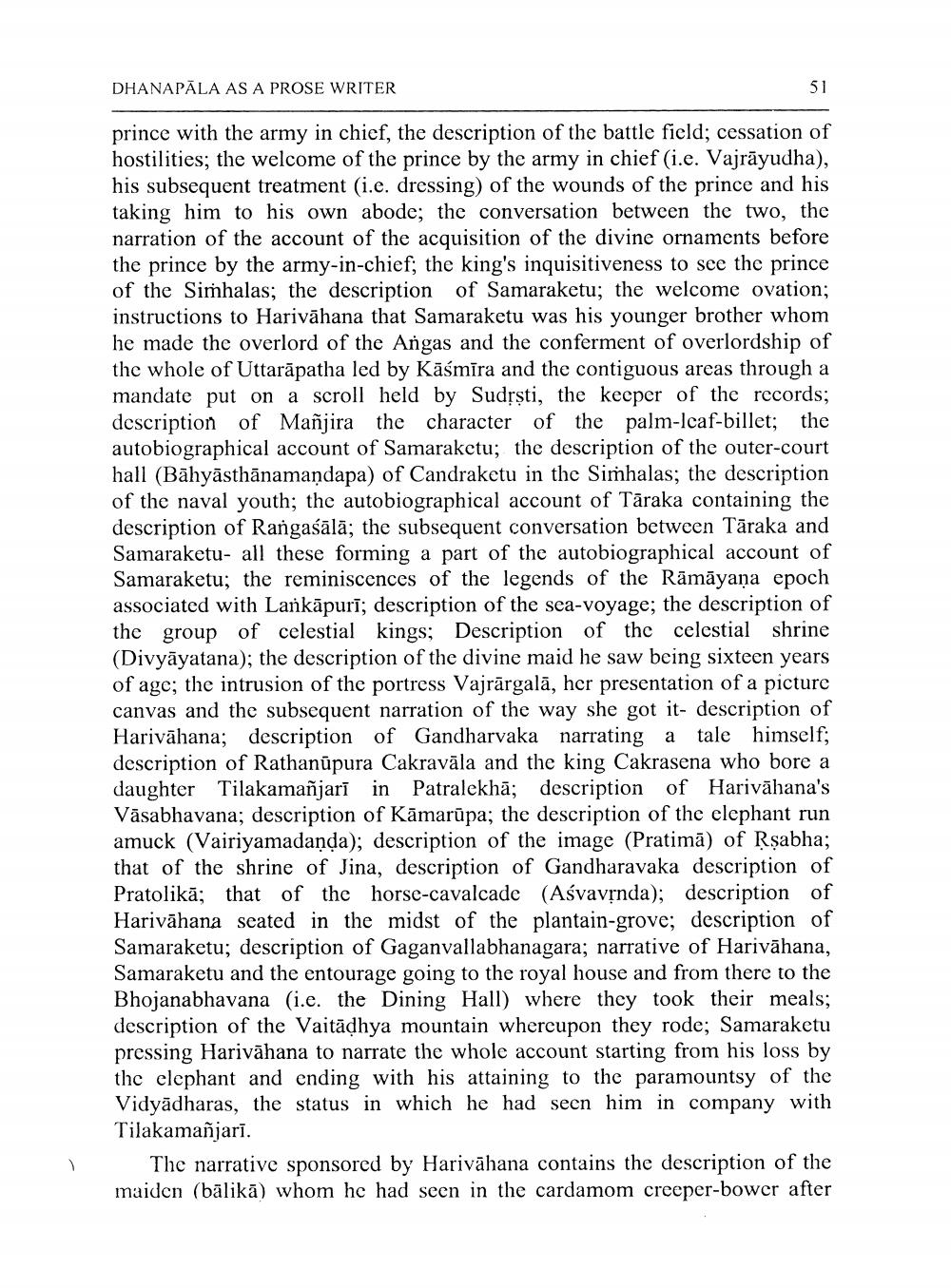________________
DHANAPĀLA AS A PROSE WRITER
prince with the army in chief, the description of the battle field; cessation of hostilities; the welcome of the prince by the army in chief (i.e. Vajrāyudha), his subsequent treatment (i.e. dressing) of the wounds of the prince and his taking him to his own abode; the conversation between the two, the narration of the account of the acquisition of the divine ornaments before the prince by the army-in-chief; the king's inquisitiveness to see the prince of the Simhalas; the description of Samaraketu; the welcome ovation; instructions to Harivāhana that Samaraketu was his younger brother whom he made the overlord of the Angas and the conferment of overlordship of the whole of Uttarāpatha led by Kāśmīra and the contiguous areas through a mandate put on a scroll held by Sudrști, the keeper of the records; description of Mañjira the character of the palm-leaf-billet; the autobiographical account of Samaraketu; the description of the outer-court hall (Bāhyāsthānamandapa) of Candraketu in the Simhalas; the description of the naval youth; the autobiographical account of Tāraka containing the description of Rangaśālā; the subsequent conversation between Tāraka and Samaraketu- all these forming a part of the autobiographical account of Samaraketu; the reminiscences of the legends of the Rāmāyaṇa epoch associated with Larkāpurī; description of the sea-voyage; the description of the group of celestial kings; Description of the celestial shrine (Divyāyatana); the description of the divine maid he saw being sixteen years of age; the intrusion of the portress Vajrārgalā, her presentation of a picture canvas and the subsequent narration of the way she got it- description of Harivāhana; description of Gandharvaka narrating a tale himself; description of Rathanūpura Cakravāla and the king Cakrasena who bore a daughter Tilakamañjarī in Patralekhā; description of Harivāhana's Väsabhavana; description of Kāmarūpa; the description of the elephant run amuck (Vairiyamadanda); description of the image (Pratimā) of Rṣabha; that of the shrine of Jina, description of Gandharavaka description of Pratolikā; that of the horse-cavalcade (Aśvavịnda); description of Harivāhana seated in the midst of the plantain-grove; description of Samaraketu; description of Gaganvallabhanagara; narrative of Harivāhana, Samaraketu and the entourage going to the royal house and from there to the Bhojanabhavana (i.e. the Dining Hall) where they took their meals; description of the Vaitādhya mountain whereupon they rode; Samaraketu pressing Harivāhana to narrate the whole account starting from his loss by the elephant and ending with his attaining to the paramountsy of the Vidyādharas, the status in which he had seen him in company with Tilakamañjarī.
The narrative sponsored by Harivāhana contains the description of the maiden (bālikā) whom he had seen in the cardamom creeper-bower after




